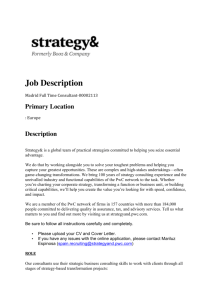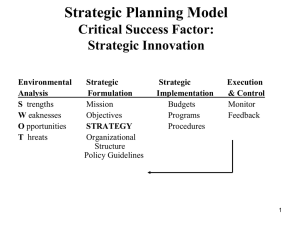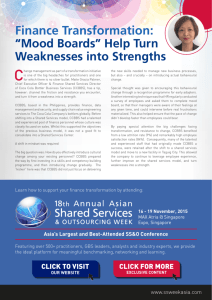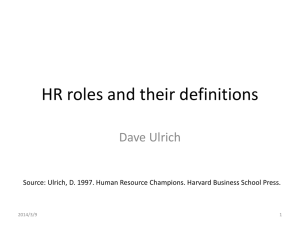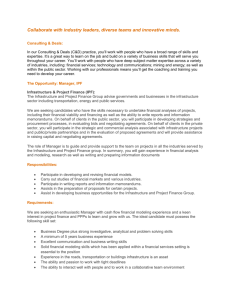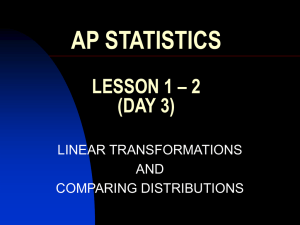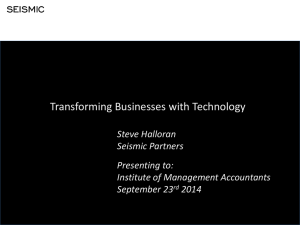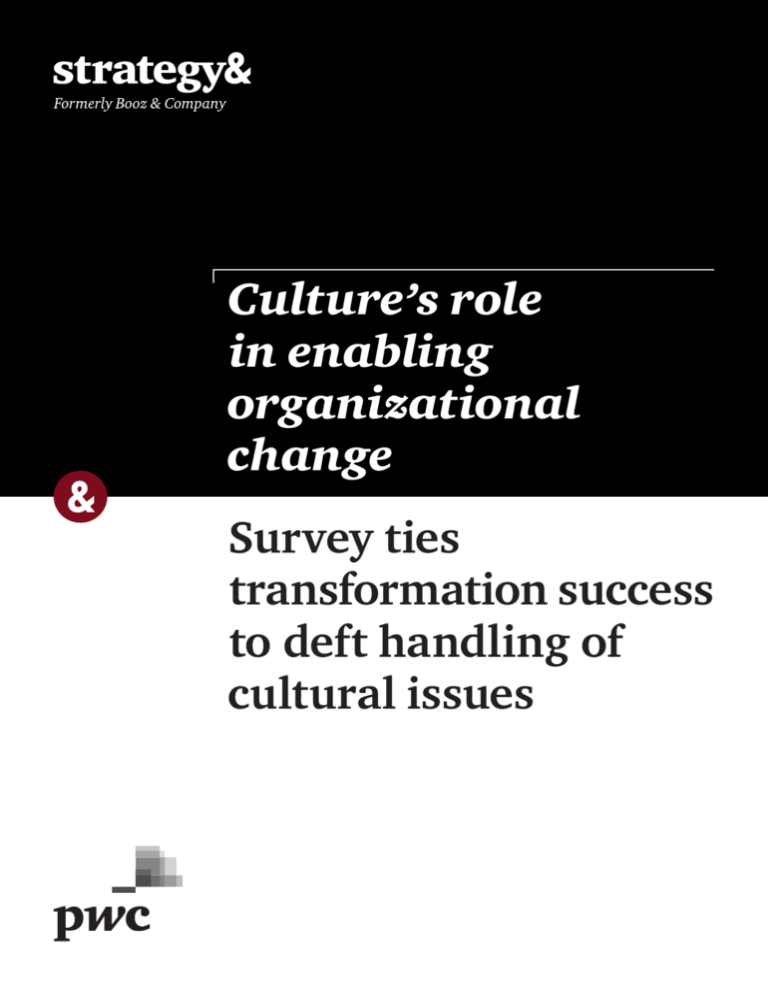
Culture’s role
in enabling
organizational
change
Survey ties
transformation success
to deft handling of
cultural issues
Contacts
About the authors
Berlin
New York
Carolin Oelschlegel
Principal
+44-7825-67-6472
carolin.oelschlegel
@strategyand.pwc.com
Rutger von Post
Partner
+1-212-551-6090
rutger.vonpost
@strategyand.pwc.com
Buenos Aires
San Francisco
Ariel Fleichman
Partner
+54-11-4131-0432
ariel.fleichman
@strategyand.pwc.com
DeAnne Aguirre
Senior Partner
+1-415-653-3472
deanne.aguirre
@strategyand.pwc.com
Delhi
Shanghai
Gaurav Moda
Principal
+91-124-499-8719
gaurav.moda
@strategyand.pwc.com
Tony Tang
Principal
+86-21-2327-9800
tony.tang
@strategyand.pwc.com
Dubai
Sydney
James Thomas
Principal
+971-4-390-0260
james.thomas
@strategyand.pwc.com
Varya Davidson
Partner
+61-2-9321-2820
varya.davidson
@strategyand.pwc.com
Mexico City
Tokyo
Carlos Navarro
Partner
+52-55-9178-4209
carlos.navarro
@strategyand.pwc.com
Kenji Mitsui
Partner
+81-3-6757-8692
kenji.mitsui
@strategyand.pwc.com
DeAnne Aguirre is a senior partner with
Strategy& based in San Francisco.
She is the co-leader of the global
Katzenbach Center and an expert in
culture, talent effectiveness, leadership,
and change management. She
advises senior executives globally on
organizational topics.
Rutger von Post is a partner with
Strategy& based in New York and is
head of the Katzenbach Center in North
America. He specializes in culture
transformation and organizational design
and effectiveness in the financial-services
industry.
Micah Alpern is a senior associate with
Strategy& based in Chicago and is a
member of the Katzenbach Center’s
operating team. He is an expert in culture
transformation and change management.
This report was originally published by
Booz & Company in 2013.
2
Strategy&
Executive summary
For all the money and effort that go into corporate change initiatives,
they have a decidedly mixed success rate. Only about half of transformation
initiatives accomplish and sustain their goals, according to a survey on
culture and change management by the Katzenbach Center.
Among the biggest obstacles to successful change are “change fatigue”
(which occurs when workers are asked to follow through on too many
changes at once) and a lack of the capabilities needed to make major
changes last. Sixty-five percent of survey respondents cited change fatigue,
and only about half felt their organization had the capabilities to deliver
change. Another problem is the tendency for management to exclude lowerlevel employees in developing and executing the change plan.
The role of culture was a particular focus of the survey. Although 84 percent
of all respondents think culture is critically important, a far smaller
percentage (less than half) believe their companies do a good job of
managing culture. The same respondents who see their companies’ change
programs as falling short tend to say that culture isn’t a priority in their
companies’ transformation initiatives.
The survey points to the need for companies to take a more holistic approach
to change and to find ways to work with and within the organization’s
culture during change initiatives. This is not to say that culture-enabled
transformation removes the need for formal change management processes
or techniques. It doesn’t. But it does mean that leaders need to rethink how
to drive and sustain change if they want to materially increase the success of
their transformation programs.
Strategy&
3
Why transformations
typically fall short
When they embark on transformation efforts, companies put their
credibility and reputations on the line — not to mention a lot of
financial capital. Are the effort and money well spent? A wide body of
literature suggests that many change initiatives fail, typically in areas
such as process improvement, cost reduction, digitization, and quality
improvement. Even when they initially succeed, their benefits may
not last.
To learn more about what goes wrong with transformation efforts and
what might be done to make them more successful, the Katzenbach
Center conducted a survey of more than 2,200 executives, managers,
and employees (see Methodology, page 11).
Transformation efforts face three major obstacles, according to the
study. The first is “change fatigue,” a dynamic that comes into play
when employees feel they are being asked to make too many changes at
once. Sixty-five percent of survey respondents say they have experienced
some form of change fatigue. The second obstacle relates to companies’
skill at driving transformation; 48 percent of respondents say their
companies don’t have the necessary capabilities to ensure that change is
sustained. The third issue is the way transformation initiatives are
selected, planned, and implemented — by senior managers, without
much input from lower-level employees. This limits understanding and
buy-in. When asked to select the top three reasons people resist change,
44 percent of employees say they don’t understand the change they’re
being asked to make, and 38 percent say they don’t agree with it.
Uncertainty,
deep down in an
organization,
can keep a
change initiative
from gaining
momentum.
When employees are faced with too many change priorities, aren’t sure
how to proceed, and aren’t even sure that an initiative is good for the
organization, they take a wait-and-see attitude, looking to their bosses for
direction and to their co-workers for clues about which aspects matter the
most. This sort of uncertainty, deep down in an organization, can keep a
change initiative from gaining momentum. (A later-stage obstacle to
change comes in the form of the “boomerang effect,” in which initial
changes start to fade when leadership stops paying attention and moves on
to other priorities.)
4
Strategy&
A change plan may be especially hard to implement if employees see the
transformation as being contrary to the company’s culture — to the many
things, such as feedback and peer and manager behavior, that determine
(as people often put it) “how we do things around here.” It is for these
reasons that a high proportion of change initiatives fail. Only a little more
than half of all respondents — 54 percent — say change initiatives at their
companies are adopted and sustained.
Turning to culture, it is clear that people understand its importance.
Eighty-six percent of C-suite executives and 84 percent of all managers
and employees say culture is critical to their organizations’ success, and
60 percent see it as a bigger success factor than either their strategy or
their operating model (see Exhibit 1). Still, culture doesn’t seem to be a
priority when companies are trying to drive change, and a deeper
analysis of the data — pinpointing culture’s place in successful change
programs and its place in unsuccessful change programs — reveals some
striking correlations.
Exhibit 1
Growth rates in disposable income for three major markets, 2002–12
84%
…agree that their organization’s culture is critical to business success
60%
…say culture is more important than strategy or operating model
45%
…do not feel their culture is being effectively managed
47%
…do not feel culture is an important part of the leadership team’s agenda
51%
…think their organization’s culture is in need of a major overhaul
44%
…say culture change should take less than one year
48%
…think, other than communications and leadership alignment, they do not have the capabilities to effectively deliver change
#1
…barrier respondents said prevents sustainable change is there are too many competing priorities, creating change fatigue
#1
…reason respondents resist change is they are skeptical due to past failed change efforts
#2
…reason respondents resist change is they do not feel involved in the change process
Source: Strategy& Global
Culture and Change
Management Survey 2013
Strategy&
5
In particular, when transformation initiatives fall short, it usually appears
that corporate culture was an afterthought. Among the survey respondents
who said the changes at their companies weren’t adopted and sustained over
time, only 24 percent said their companies used the existing culture as a
source of energy and influence during the change effort. Only 35 percent of
respondents who said change efforts hadn’t succeeded saw their companies
as trying to leverage employees’ pride in, and emotional commitment to,
their organizations.
By contrast, cultural levers were at least twice as likely to have played a role
in change programs that had succeeded. Seventy percent of respondents
who said change efforts at their companies were adopted and sustained also
said their companies leveraged employees’ pride in the organization and
their emotional commitment. Fifty-six percent of respondents at companies
where changes had worked said the existing culture was used as a source of
energy and influence.
It seems clear that there’s a disconnect between what many companies say
about culture and how much they attend to it. Only about half of all
employees say their leaders treat culture as a priority on a day-to-day basis.
Fewer still (45 percent) say culture is effectively managed at their companies.
A full 96 percent of respondents say some change to their culture is needed,
and 51 percent think their culture requires a major overhaul. Putting all of
this together, there would seem to be an opportunity, indeed a need, to
evolve culture itself so that it can be used as more of a change lever and, in
some cases, to have culture lead the transformation.
6
Strategy&
Leading change with culture
As an enabler of change, culture remains stubbornly underleveraged.
Both the survey data and our years of experience observing a wide
range of companies trying to transform some aspect of their business
or operations suggest that culture is usually pretty far down the
priority list.
Most business transformations are at least loosely based on an eightstep process first codified by John Kotter of Harvard Business School.
In practice, many change programs disproportionately emphasize
two of the levers he cites — communications and leadership
alignment. Culture is the last step in Kotter’s formula, something
that can be addressed only after new practices have taken hold and
proven their value. And as our data suggests, culture is often not
addressed at all.
These priorities need to be rethought. This is not to denigrate traditional
change levers — including top-level diagnostics, organizational design,
performance management, metrics, and incentives. Depending on the
change initiative, these may all be crucial. But a change effort needs to
lead with culture as part of a more holistic approach if a transformation
program is to have the best possible chance of success. In particular, the
change needs to draw on whatever positive cultural attributes are
embedded in the organization. It also needs to minimize any negative
cultural attributes that might get in the way.
As an enabler
of change,
culture remains
stubbornly
underleveraged.
There are several levers that companies should employ as they use
culture to lead transformation — or when they are trying to transform
their own cultures. Among the most important are the following:
• Culture diagnostic: Before you can use culture in a
transformation or change your culture, you need to know your
culture’s strengths and weaknesses. Effectively tapping into the
strengths can give your change initiative the momentum it needs
to overcome obstacles.
• The “critical few” behaviors: Setting a small number of clear
behavioral change goals, which we call the critical few, is a
Strategy&
7
crucial way of showing workers what you want them to do
differently. By focusing on only a few behaviors, you avoid a
situation in which workers become overwhelmed and as a result
do nothing, hoping the new requirements will just go away (see
“Focusing on the Critical Few,” page 9).
• Employee pride and commitment: The odds of a successful
transformation plummet when morale is bad. Companies must
find ways to connect workers to something larger that they can
believe in — including customer benefits or the satisfaction of
beating a benchmark.
• Informal peer networks and motivators: Culture might start at
the top, but it is reinforced at every level. Having a peer point out
the benefits of change, instead of an executive or manager, is very
powerful and leads to improved behaviors that continue even
when nobody is looking (see “The Power of a Peer,” page 10).
• Storytelling: How did we get here? At companies with strong
cultures, there are usually widely known stories that answer this
question, often about the boldness of a leader or some decisive
moment in the company’s history. These stories can be a source of
pride and a natural way of reinforcing desired behaviors.
8
Strategy&
Focusing on the Critical Few
A strong example of putting the “critical
few” concept into practice involves a
global consumer and industrial company
that wanted to change the culture in its
financial shared-services organization.
Morale at the organization was low.
Employees tended to point fingers
rather than accept responsibility and
to be reactive in solving problems. The
organization rarely looked into root
causes, so the same problems kept
cropping up again and again. Because
of these issues, the financial sharedservices group lacked the respect
and trust of other departments in the
company. A feeling that bordered on
hostility hung over the organization’s
interactions with its internal partners.
The organization had a long list of new
behaviors that it could have addressed.
Instead, it focused on a critical few
that everyone could remember and
understand. Among them were taking
ownership for results, soliciting and
providing constructive feedback on
performance-related issues, and treating
an outsourcing firm with which relations
had become contentious as a partner
instead of an enemy.
Of course, it is one thing to set goals for
a transformation and another to achieve
them. Recognizing this, the sharedservices organization broke down
Strategy&
its short list of priorities into a set of
specific behaviors that varied depending
on the actor. The organization’s leaders,
for instance, were instructed to push
employees to come up with longerlasting solutions and to praise them
when they did. Internal partners were
asked to be respectful and collaborative
when presenting issues. And the
outsourcing firm — along with the
shared-services organization’s own
employees — was encouraged to look
for the root causes of problems as part
of an overall effort to find longer-term
solutions. In an upcoming phase of the
change plan, that inquisitiveness will be
formalized in a “Five Why” campaign,
in which workers will be trained to ask
why something has happened in five
different ways, if necessary.
The change initiative is starting to
reinvigorate the department and
generate an enthusiasm that had
long been absent. A competition for
operational improvement ideas elicited
288 suggestions from people in the
department. The ultimate vote of
confidence came about a year after the
transformation initiative started. In an
internal survey, 70 percent of the staff
said they believed that the new model
for shared services was essential to
making the department more efficient.
9
Change imperatives
Culture is not a shortcut to successful corporate change. Nor is culture-led
transformation less rigorous than more conventional types of transformation — it involves just as much time and effort. Culture-led transformations
require a fundamentally sound set of change objectives and discipline in
the sense of setting priorities. Performing a culture diagnostic, identifying
a critical few behaviors, capitalizing on employee pride and commitment,
engaging in effective storytelling, and leveraging informal peer networks
are just a few of the ingredients in the change recipe. We will dig more
deeply into these and other factors in a subsequent paper.
The Power of a Peer
Informal peer networks help an organization
take advantage of employee pride and
emotional commitment. One way to utilize
these networks during a transformation
effort is to identify and leverage certain
people as “pride builders.” These are highly
respected individuals, usually middle
and frontline managers with leadership
qualities who excel at helping colleagues
feel good about their work. The role of
pride builders during a transformation
effort is to show how a new way of doing
something connects to the bigger picture of
the organization’s goal. These individuals
also encourage their fellow employees and
direct reports to embrace the new behaviors
and requirements and to take responsibility
for meeting them. Finally, pride builders
challenge others to come up with innovative
ways to meet the new standards, and
to spread those innovations and ideas
throughout the enterprise.
10
The tactics employed by pride builders
depend on the initiative and the audience,
but it is often helpful for the tactics to go
beyond the ordinary. Consider the case
of a global technology company, which
identified about 2,000 pride builders to help
translate senior leadership directives into
actions through a focus on the company’s
distinctive culture. Different tactics were
used in different geographies. In Asia, the
pride builders created a game show to
remind employees of the company’s many
assets and cultural strengths. In Europe,
the pride builders set up a photo contest
focusing on the cultural attributes that
were most important at the company. The
company also held a global contest, in
which senior leaders — and eventually all
employees — were encouraged to make
videos about the company’s culture and
how they tried to embody it every day. (The
videos were voted on by employees.)
Strategy&
These and other tactics boosted employee
engagement scores by roughly 12 percent in
less than a year. They have also contributed
to measurable improvements in a variety
of areas where the company’s performance
had suffered, including product quality,
market share, and top-line growth.
Methodology
The survey was conducted in May 2013 by
the Katzenbach Center, through an online
questionnaire. We received responses
from 2,219 participants, with a variety of
titles and from many different industry
sectors (see Exhibit A).
Exhibit A
The survey drew more than 2,000 responses from participants in a range of industries
and geographies
Seniority
Company Size
Sector
12% C-suite
35% 0–499 employees
80% Private
17% Director
37% 500–10,000 employees
20% Public
24% Manager
28% >10,000 employees
47% Other
Industry
Function
Region
15% Retail
17% General Management
53% Americas
15% Consumer
13% Planning
30% Europe, the Middle East, and Africa
11% Operations
17% Asia-Pacific
8% Healthcare
9% Finance
7% Energy
12% Engineered Product Services
34% Other
Strategy&
59% Other
Source: Strategy& Global
Culture and Change
Management Survey 2013
11
Strategy& is a global team
of practical strategists
committed to helping you
seize essential advantage.
We do that by working
alongside you to solve your
toughest problems and
helping you capture your
greatest opportunities.
These are complex and
high-stakes undertakings
— often game-changing
transformations. We bring
100 years of strategy
consulting experience
and the unrivaled industry
and functional capabilities
of the PwC network to the
task. Whether you’re
charting your corporate
strategy, transforming a
function or business unit, or
building critical capabilities,
we’ll help you create the
value you’re looking for
with speed, confidence,
and impact.
We are a member of the
PwC network of firms in
157 countries with more
than 184,000 people
committed to delivering
quality in assurance, tax,
and advisory services. Tell us
what matters to you and find
out more by visiting us at
strategyand.pwc.com.
This report was originally published by Booz & Company in 2013.
www.strategyand.pwc.com
© 2013 PwC. All rights reserved. PwC refers to the PwC network and/or one or more of its member firms, each of which is a separate legal entity. Please see www.pwc.com/structure for further
details. Disclaimer: This content is for general information purposes only, and should not be used as a substitute for consultation with professional advisors.

